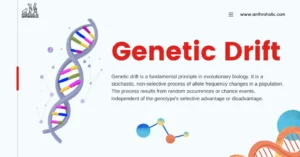AI Answer Evaluation Platform Live Now. Try Free Answer Evaluation Now
Language Culture and Brain Interaction
The field of linguistic anthropology has long held an interest in the complex interplay between language, culture, and cognition. Anthropologists assert that language is not just a mere communicative tool, but it embodies cultural values, norms, and beliefs, and actively shapes our cognitive processes [1].

Interplay of Language and Culture
Linguistic Relativity
The idea that language shapes thought is grounded in the concept of linguistic relativity, or the Sapir-Whorf hypothesis [2]. It posits that:
- The language we speak influences our thought processes.
- Each language provides a unique cognitive framework, which impacts how its speakers perceive and understand the world.
For instance, the Hopi Native Americans, who lack tense markers in their language, perceive time differently from English speakers [3].
Sociolinguistics
On a broader societal level, language serves as a social identifier. It can represent one’s social class, ethnicity, and even profession. Sociolinguistic phenomena, such as code-switching (shifting between language varieties in conversation) and language change, demonstrate how cultural dynamics shape language use [4].
Culture through Language
Language also carries cultural significance, expressing cultural nuances through idioms, metaphors, and proverbs. Some words or phrases in one language cannot be directly translated into another, highlighting the depth of cultural specificity within languages [5].
Language and Brain Interaction
Neurobiological Perspectives
Recent advancements in neuroscience have demonstrated that language processing involves a complex network within the brain, primarily the Broca’s and Wernicke’s areas. However, different languages may stimulate the brain differently, thus influencing cognitive processes.
| Languages | Brain Area | Cognitive Impact |
|---|---|---|
| English | Left hemisphere | Logical Reasoning |
| Chinese | Both hemispheres | Holistic thinking |
Language Acquisition and Brain Plasticity
The brain’s plasticity allows it to adapt and change with language acquisition. Early multilingual exposure has been associated with enhanced cognitive abilities, such as problem-solving and executive function, indicating a bi-directional relationship between language and cognition.
Language, Culture, and Brain: The Intersection
These three elements—language, culture, and cognition—are not standalone entities, but they interact and influence each other.
- Language and Culture: As discussed, language carries cultural nuances and is influenced by societal norms and values.
- Culture and Brain: Cultural practices can shape cognitive processes and even alter brain structures. For example, literate and non-literate populations show different brain activation patterns when performing the same cognitive tasks.
- Language and Brain: Language shapes cognitive processes and, conversely, cognitive processes influence language use and comprehension.
Multilingualism and Cognitive Advantages
Cognitive Advantages
Multilingualism serves as an ideal model to explore language-culture-brain interaction. Bilingual or multilingual individuals exhibit cognitive advantages like enhanced executive function, creativity, and mental flexibility, all resultant from their adeptness in language-switching and negotiation between different linguistic and cultural codes.
Bilingual Brain
Interestingly, bilingualism changes the brain’s structure and functionality. Bilinguals exhibit increased gray matter density in language-related brain regions and enhanced connectivity between these regions, proving that language experiences can literally ‘shape’ the brain.
Impact on Society
Linguistic Anthropology in Action
Linguistic anthropology’s theoretical perspectives are highly applicable to understanding societal issues, such as:
- Linguistic discrimination and language policy
- Multicultural education and language learning
- Interpretation of cross-cultural interactions
Implications for Education
Understanding the complex interplay between language, culture, and the brain has vital implications for education. Embracing linguistic and cultural diversity can enhance students’ cognitive abilities, promote multicultural understanding, and foster inclusive learning environments.
Future Directions
Interdisciplinary Collaboration
The complexity of language-culture-brain interaction necessitates an interdisciplinary approach. Combining linguistic anthropology with cognitive science, neuroscience, and sociolinguistics, to name a few, can provide a more holistic and nuanced understanding of this interaction.
Technological Advancements
Technologies such as functional MRI (fMRI) and positron emission tomography (PET) scans open new avenues for investigating the neurological underpinnings of language-culture-brain interaction.
Conclusion
Linguistic anthropology’s exploration of the intersection of language, culture, and cognition unveils the profound ways our languages and cultures influence our thought processes and how these interactions are reflected in our brains. This rich and complex interplay is instrumental in shaping not only our individual minds but also our societal structures and interactions.
References
[1] Duranti, A. (1997). Linguistic Anthropology. Cambridge University Press.
[2] Whorf, B.L. (1956). Language, thought, and reality. MIT Press.
[3] Malotki, E. (1983). Hopi Time: A Linguistic Analysis of the Temporal Concepts in the Hopi Language. Mouton Publishers.
[4] Wardhaugh, R., & Fuller, J. M. (2015). An introduction to sociolinguistics. John Wiley & Sons.
[5] Wierzbicka, A. (1997). Understanding Cultures through Their Key Words: English, Russian, Polish, German, and Japanese. Oxford University Press.




